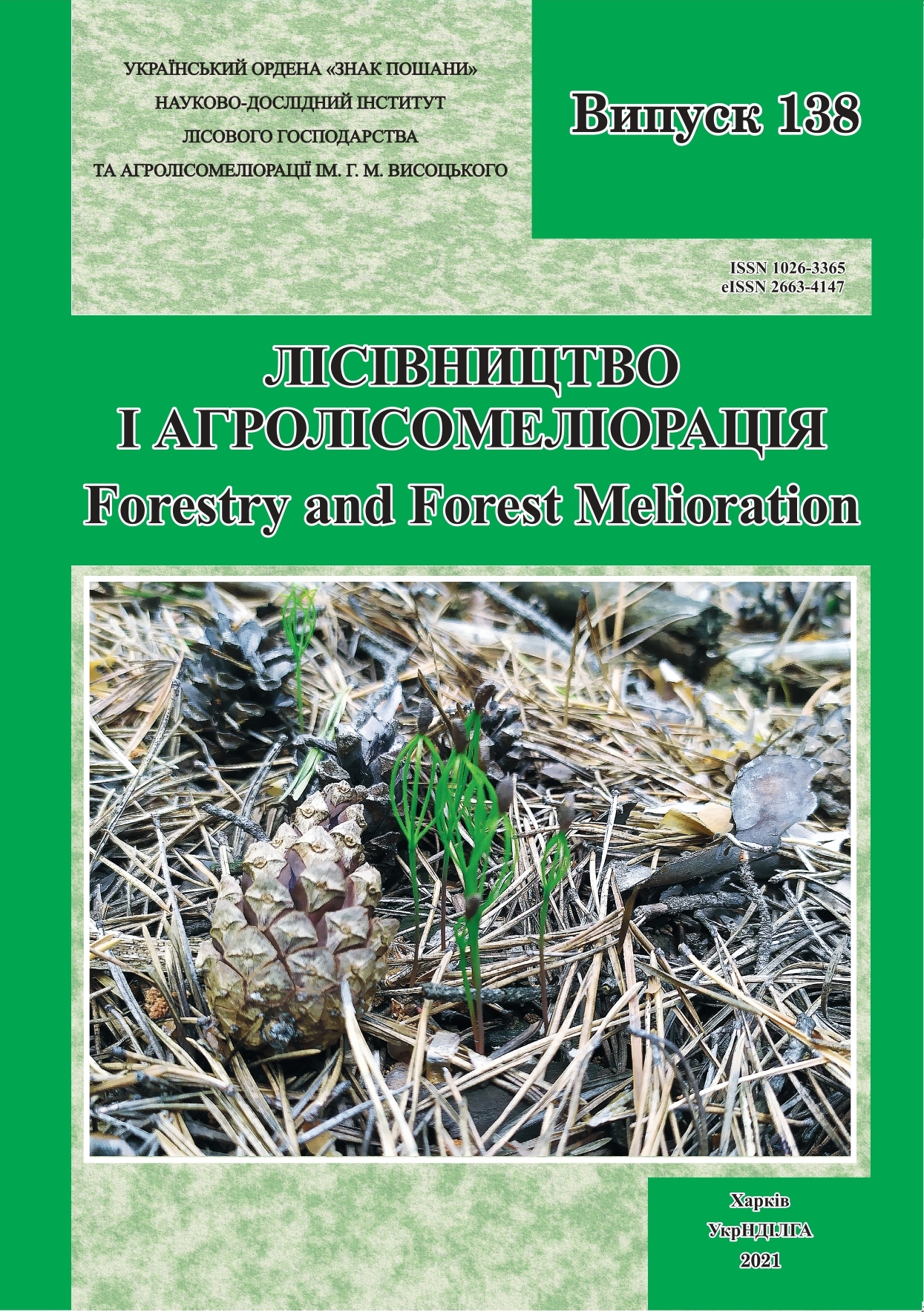Анотація
Наведено огляд літературних джерел щодо оцінювання динаміки товарної структури дубових деревостанів. Зіставлено лісотипологічне і лісогосподарське районування для виокремлення регіону дослідження як передумови для створення регіональних нормативів ведення лісового господарства. Проаналізовано поширення дубових деревостанів у лісовому фонді регіону дослідження та визначено лісівничо-таксаційні показники на дослідних ділянках. Виявлено залежність між часткою ділових стовбурів і віком модальних дубових деревостанів вегетативного походження. Побудовано таблиці динаміки товарної структури модальних дубових деревостанів із урахуванням розподілу об’ємів ділових стовбурів за класами товщини, узгодженими з європейськими підходами щодо таксації круглих лісоматеріалів. Складаючи нормативи, застосовували моделі ходу росту модальних дубняків вегетативного походження Лівобережного Лісостепу України. Проведено порівняльний аналіз динаміки виходу ділової деревини в модальних дубняках за різними стандартами. За результатами порівняння розроблених для Слобожанського лісотипологічного району нормативів із нормативами, які розроблені для дубових насіннєвих деревостанів Лісостепу, виявлено, що в останніх вихід ділової деревини є істотно вищим, що насамперед пов’язане з лісорослинними умовами регіону та вегетативним походженням деревостанів.

Ця робота ліцензується відповідно до Creative Commons Attribution 4.0 International License.
